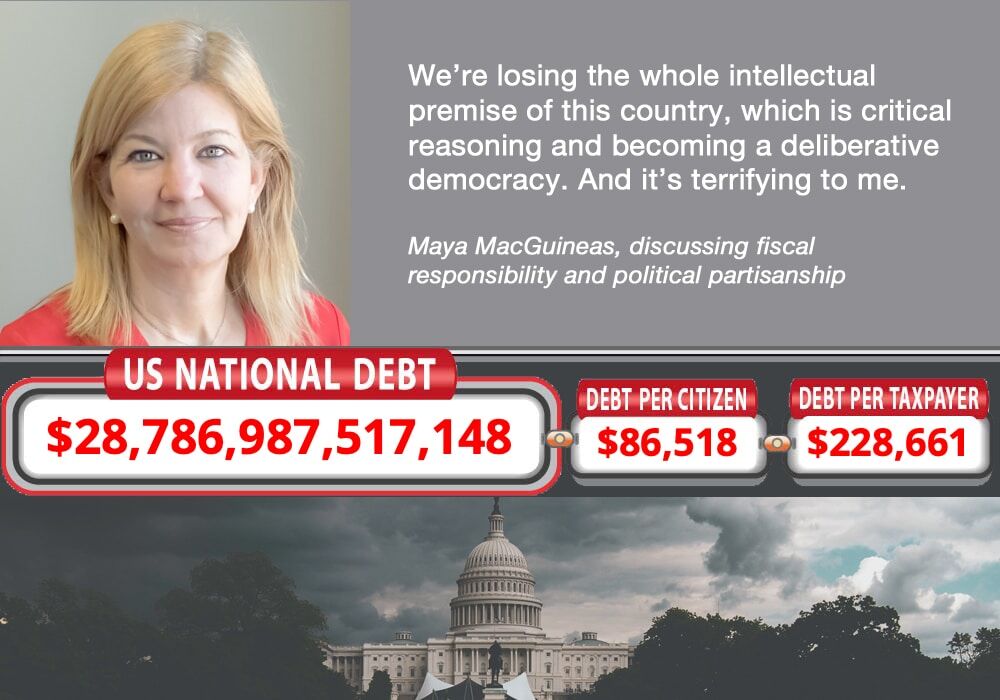So, if we will be unable to grow our way out of debt, how do we begin to fix things?
You have to do a little bit of everything. Nobody should hide behind the curtain of “we’re not going to touch major spending programs” or “we’re not going to touch taxes.” We have to do both and we have to do significant amounts of both. We might not be able to do it all at once. We may want to take an incremental approach that is phased in gradually as the economy gets stronger.
We have to fix our major entitlement programs that are headed towards insolvency. Social Security, Medicare Part A, and the Highway Trust Fund. All of those trust fund programs need to be fixed.
We should also look at putting back reasonable discretionary spending caps [on Congress]. They’re going to be running out this year. So we had spending levels in the sequester [from 2014 – 2021] that nobody planned to stick to and they never did. That’s ridiculous. You should put in limits that actually are achievable. So we should put in reasonable discretionary spending caps and we should raise revenues – lots of ways to do it.
My favorite two are, first, getting rid of many of the $1.8 trillion dollar tax breaks that exist in the code right now. And that’s an annual number.
And the second is a carbon tax. We’re going to need a new revenue stream. We should have one that is beneficial in other ways. And obviously, you make other concessions to deal with the distribution of impacts and help people who are harmed by the transitions.
But these are big policy changes, we should be talking about all of them. And they’re also things we should be doing more of. I’m a big fan of more public investments, particularly in human capital.
Infrastructure, yes. But I think that there’s a lot of ways to waste money on infrastructure. So very carefully planned out infrastructure spending. Right now, for example, we spend six dollars on seniors for every one we spend on people under 18. That seems upside-down to me for a country that’s trying to become strong in the future.
Much like our borrowing policy, our budget priorities seem very shortsighted. There are a lot of threats and challenges on the horizon. And the more we’ve already pre-committed our budget to other things [like retirement and healthcare benefits and interest on public debt], the less we’re going to be able to deal with those challenges.


